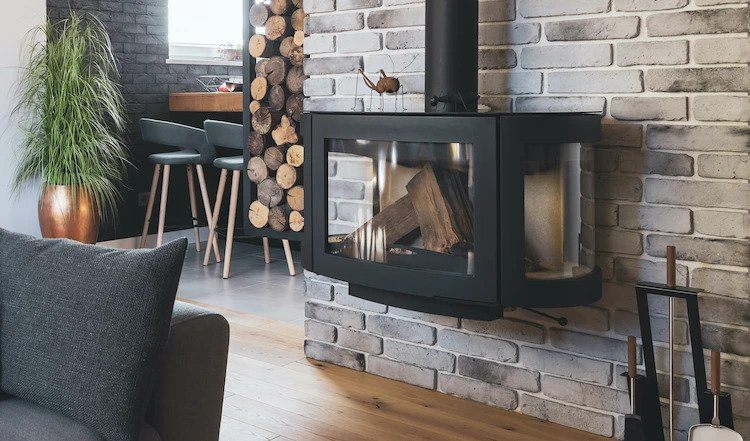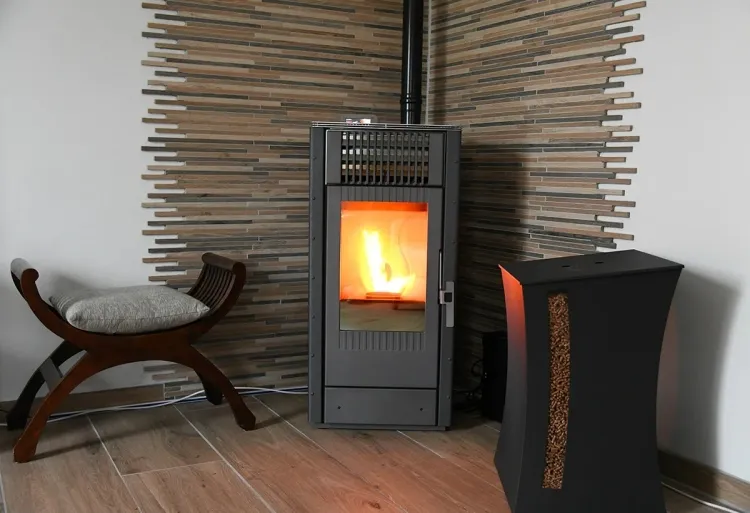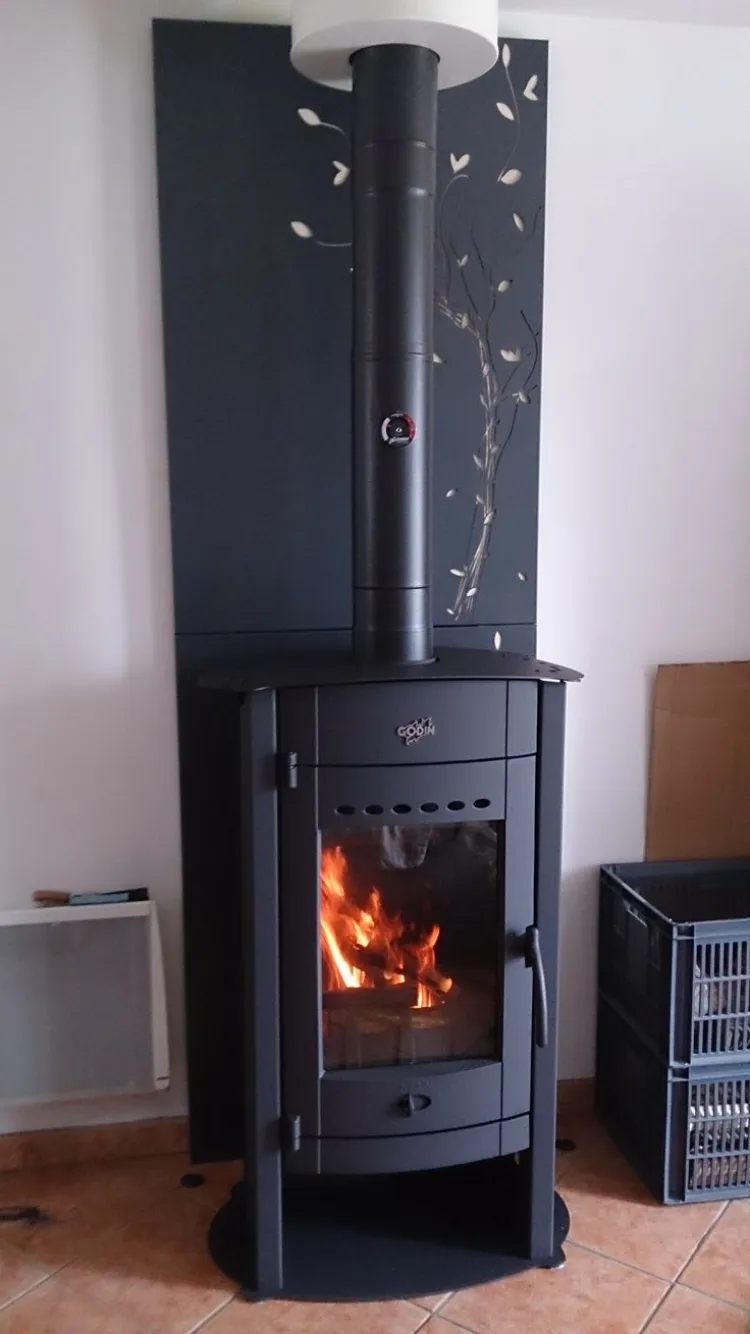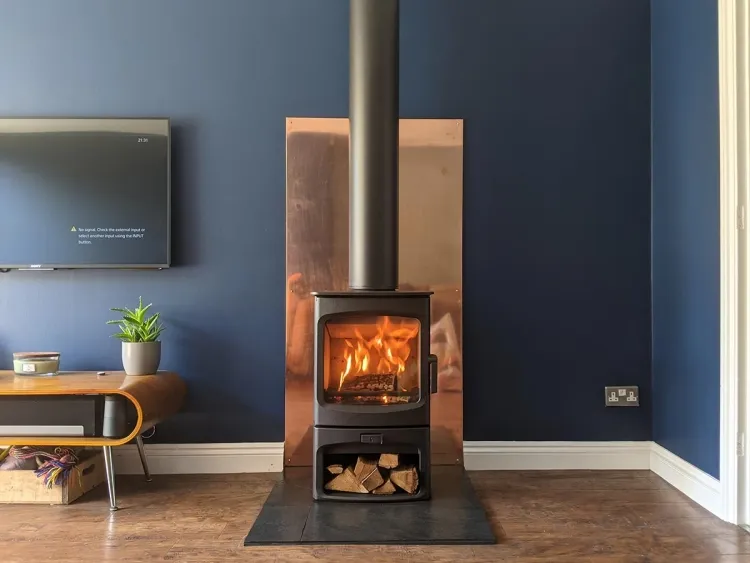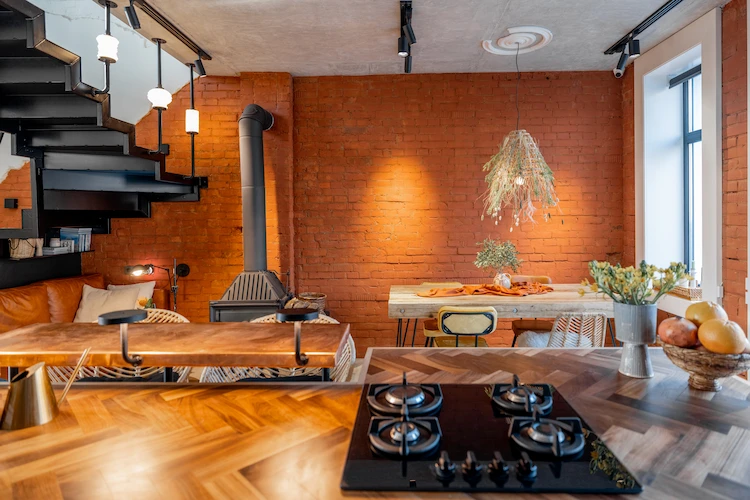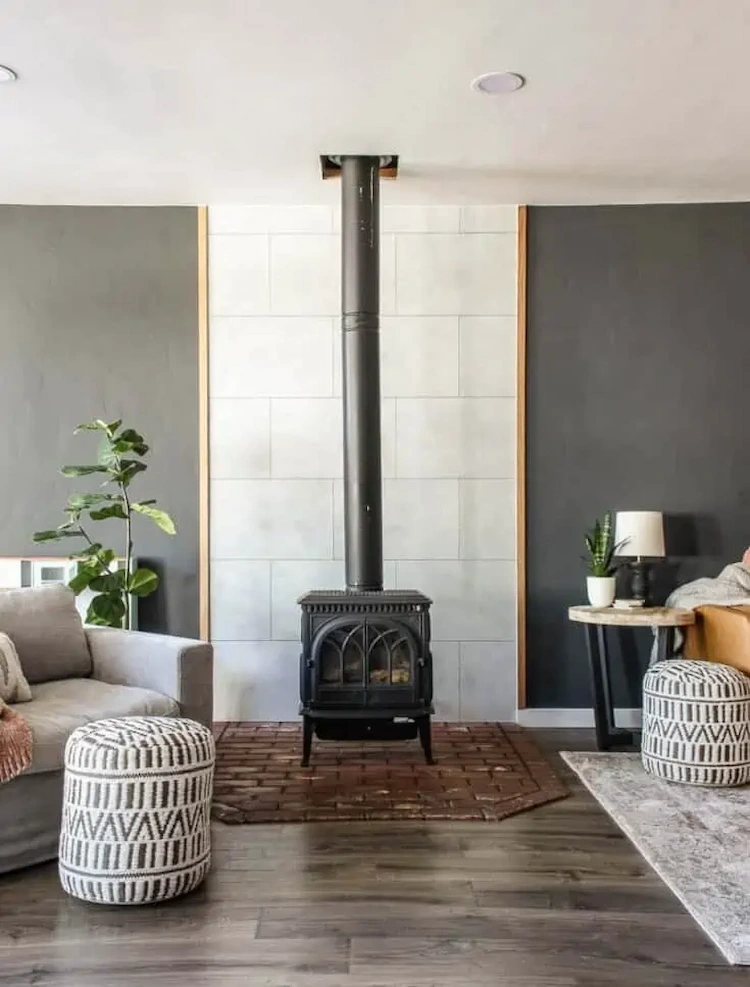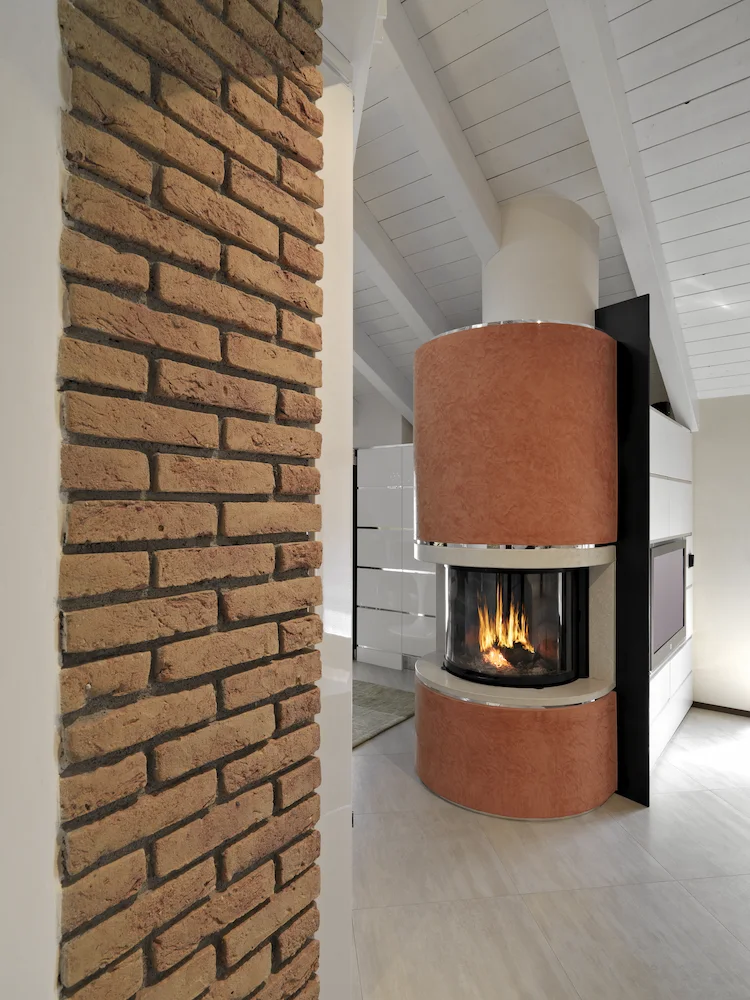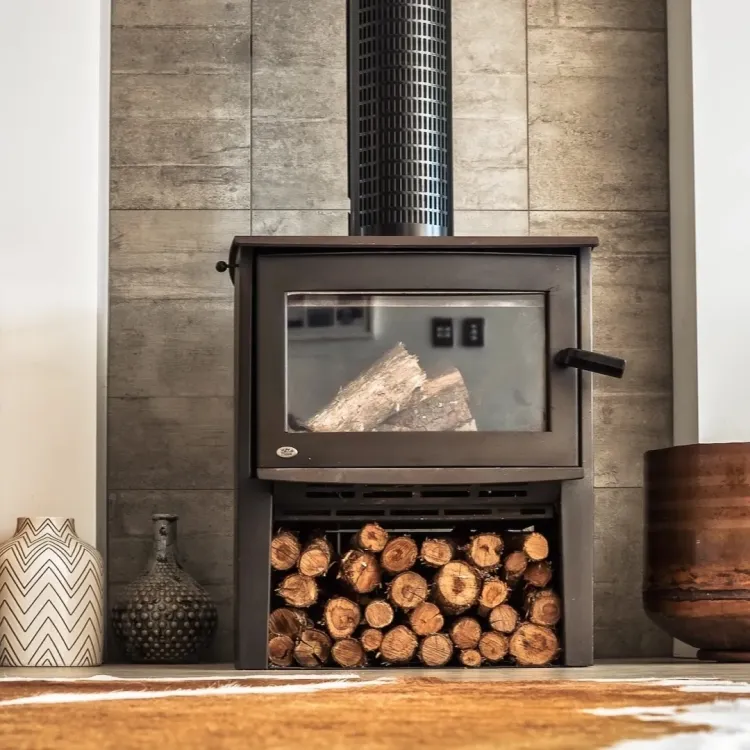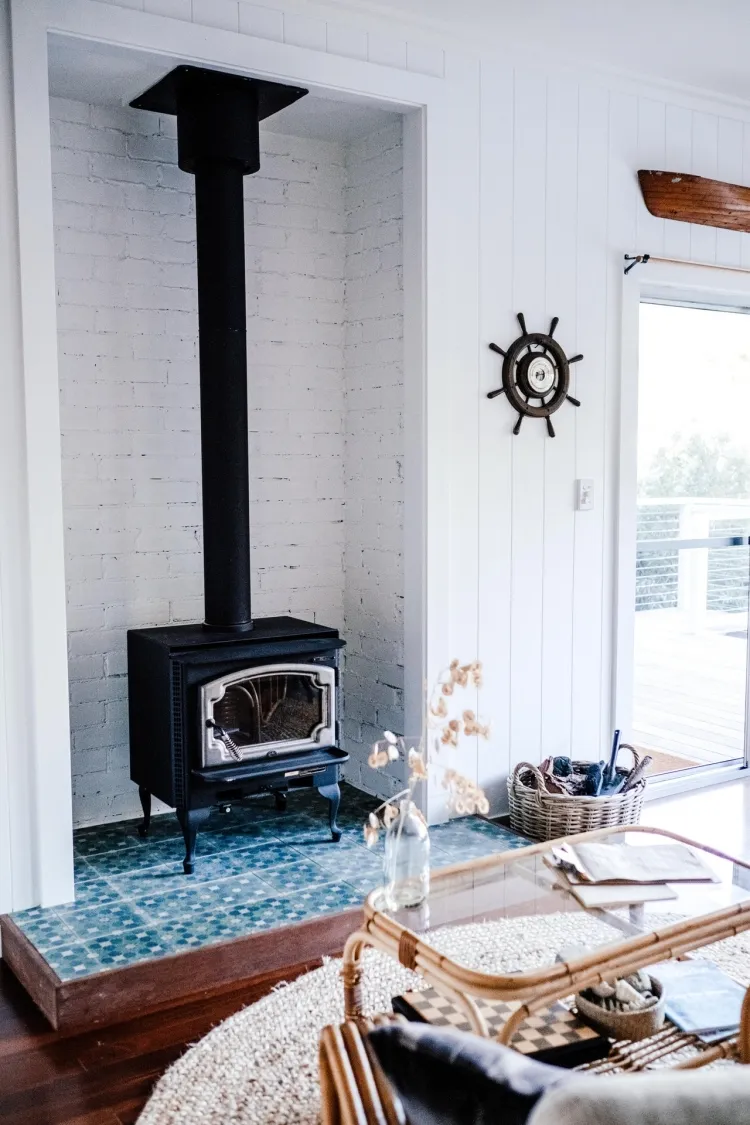To add visual appeal to your living space with a fireplace or stove, find out what heat shield would fit behind the fireplace. This area can be creatively remodeled with unique designs to highlight a wood or pellet stove. Fireplaces are an eye-catcher by themselves in a living room. However, there are numerous ways to create accent walls around and behind it that could add even more aesthetics. So, draw the attention to your fireplace with a creative and unique accent wall, using the examples for suitable stove heat shield as inspiration.
How to choose your stove heat shield?
Wood and pellet stoves work with a metal body that absorbs the heat from the fire inside and radiates that heat into the room. However, sufficient distance to nearby objects is required, more important for flammable than non-flammable variants. In addition, a heat shield creates a background, as well as thermal insulation for heating, and can also serve as a decorative element.
All materials placed behind a wood or pellet stove must be fire resistant and comply with regulations for optimal safety. In general, this type of thermal protection allows you to install your stove at a distance of 1.5 times the diameter of the chimney (at least 20 cm). This option reduces the heat emitted from the rear so that most of it is radiated to the front.
The minimum distance should be three times the diameter of the chimney, but at least 37.5 cm. For example, if you have a 9″ diameter chimney, the wall behind your stove must be at least 27″ away. Since this standard is general, do not hesitate to ask your installer for advice. If you don’t have enough space to keep the minimum distance, there is a relatively simple solution. You can attach a protective wall covering such as thermal insulation panels or a steel or aluminum sheet. This stove heat shield acts as a barrier between the wall behind your stove and the heat it gives off.
Choose the right thermal insulation for the chimney wall
In reality, there are many ways to dress up a wall behind a wood stove. There are materials for all needs and tastes. You can choose according to the desired finish and aesthetic effect. For example, install artificial concrete wall panels that do not require complex installation. Such a project is suitable for beginners or someone without a big budget. The interlocking panels make installation easy, requiring just a little construction adhesive to hold everything together. You might also consider the following options:
Fire bricks: Also called refractory bricks, these are perfect for a vintage-style interior. They also have the ability to absorb and store heat and gradually release heating energy even when the stove is off.
Stone slabs: If you are wondering what type of stove heat shield would look good behind a fireplace, natural stone could be the right answer. In addition, you can install such stone shield behind your wood or pellet stove to improve the aesthetics of the room. In fact, this type of wall covering adapts to any furnishing style and is laid like a tile covering.
Kerlite Porcelain Tile: This ceramic material, supplied in flexible slabs, is both non-combustible and rust-proof. More resistant than stone and lighter than aluminum, available in different colors, it is perfect for a furnishing with a modern look. This option is suitable for both wall and floor covering.
Enamelled Glass: This is a particularly elegant choice for a fireplace wall and shows why such a design idea is of real interest these days. Enameled, tempered glass absorbs and emits heat very effectively through natural radiation. You can find it in different sizes and colors.
Personalized decorative elements: if you want to use a natural and resistant material, a mix of plaster and fiberglass with personalized decorative elements could be the perfect choice.
Which heat shields behind a stove are not recommended?
As you can already guess, wood paneling has a hard time withstanding the intense heat that pellet or wood-burning stoves give off. Depending on the level of radiation, this material can scorch and smolder, creating a real fire hazard. For this reason, it is not recommended to install wood paneling behind a stove.
So what alternatives to wood do you have to choose from when installing a stove heat shield? In fact, you can bet on all materials suitable for wood burning stoves. Both types work on the same principle.

